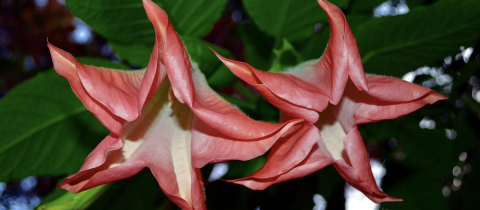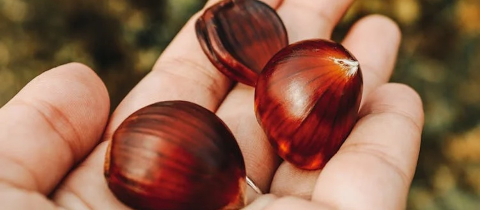Halloween is a time when witches fly, black cats prowl and zombies rise from the grave. But it is also a time for magic. No, not supernatural charms, spells or incantations but the time honoured practise of prestidigitation. October 31 is not only Halloween, but it is also International Magic Day. Chosen because it was on this date in 1926 that the most famous magician who ever lived, died. Harry Houdini, the man that no chains or cuffs could hold, quietly slipped out of this world in a Detroit hospital.
Magicians are really scientists. Of course, they pretend not to be. They amaze their audience with effects that appear to defy the laws of nature. But "appear" is the keyword. What is really happening is quite different from what the audience thinks is happening. Magicians actually make use of very down to earth scientific principles to make the "impossible" possible. One of Houdini's favourite tricks was the production of lit candles from various pockets. This "miracle" was performed by embedding a match in the wax beside the candle's wick and wrapping a piece of sandpaper, clipped to the inside of the pocket, around it. When the candle was rapidly pulled, the match and the wick were ignited.
Ehrich Weiss, later to become Harry Houdini, was born in Budapest, Hungary in 1874 but emigrated with his family to Appleton, Wisconsin at a very young age. (Harry himself always claimed to have been born in America.) Legend has it that young Ehrich never cried, he lay silently in his crib, his eyes darting back and forth with curiosity. When as a youngster he visited a circus in Appleton and saw a magician pull rabbits out of a hat and cut off and restore a man's arm, his future was sealed. He was going to be a magician!
Young Ehrich, who now changed his name to Harry Houdini, "borrowing" the name of the celebrated French magician Robert-Houdin, had no money to purchase magic tricks so he had to rely on effects that could be either carried out by sleight of hand or by using readily available materials. Such as the "tincture of iron" which was used at the time to make inks. Right. Houdini had an interest in chemistry!
The clever magician learned that iron chloride reacted with tannic acid, extracted from oak trees, to make a dark, inky solution. He also discovered that the iron-tannic acid complex responsible for the colour could be decomposed with the aid of an acid. So he devised a clever trick and wove an ingenious story around it.
Houdini strode out onto the stage, elegantly attired, and spoke of certain towns in America where the consumption of alcoholic beverages was prohibited. He then went on to tell the tale of a clever chap who was able to outwit the inspectors who prowled the countryside by producing wine in a magical fashion. As he recounted the story, Houdini "re-enacted" the miracle. He poured water from a pitcher into a glass, turning it into wine. Pouring the contents of the glass back into the pitcher resulted in a pitcher full of wine! But then he heard the inspectors knocking at the door!
Quickly the wine was poured back into a glass whereupon it changed back into water. Adding this water to the pitcher then turned all of the wine back into water. The audience cheered as Houdini triumphantly held the pitcher of water aloft. The oxalic acid had done its magic.
Houdini had diverse interests. He was as famous for his escape tricks as he was for his magic. As a youngster, he loved his mother's apple pies so much that he would gobble them up as soon as they were out of the oven. Finally, Mrs. Weiss had to lock the pies up in a cupboard! But this did not deter Ehrich. He quickly learned how to open the lock and thus triggered a lifetime fascination with locks, handcuffs and straight jackets. He became the man no lock could hold.
Harry was also a superb physical specimen. He had to be in excellent condition to perform feats such as the famed "Chinese Water Torture" cell escape. He prided himself on having stomach muscles so strong that he could withstand any punch. This proved to be his undoing.
On October 19, 1926, Houdini gave a lecture at McGill University on the techniques that fake mediums used to convince their clients that they could indeed communicate with the spirit world. Harry was, of course, familiar with all the magic tricks the charlatans used to defraud people and delighted in exposing them. He often bragged that spiritualists would declare a national holiday when he left this world. Cleverly, he added that they could then do this in safety because he couldn't do anything to them "from the other side." But Harry made it clear that if anyone could ever communicate from the other side it would be he. The magician had a penchant for accomplishing "firsts."
At the McGill lecture, Houdini met young Sam Smiley, then a McGill arts student, who had sketched a portrait of the magician during the presentation. He invited Smiley to his dressing room at the Princess Theatre so that the artist could produce a more formal drawing. While he was engaged in his artwork, a McGill divinity student by the name of Gordon Whitehead came by with a book for Houdini. Whitehead asked Houdini if it was true that he could withstand any blow to the stomach. The magician grunted yes, but the blows came before he had a chance to prepare himself. Less than two weeks later, the greatest magician of them all was dead from a ruptured appendix.
Want to comment on this article? Here it is on our Facebook page!







